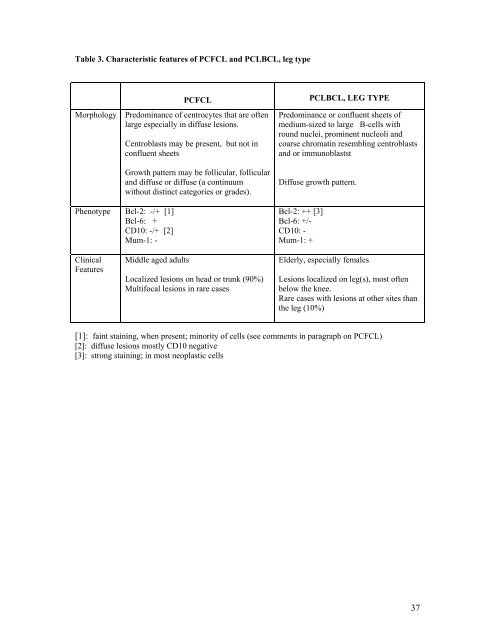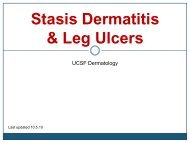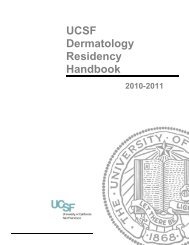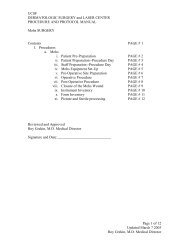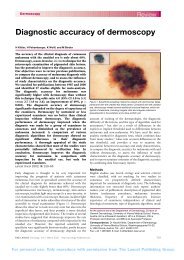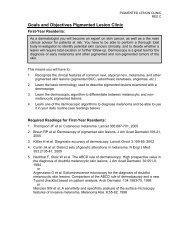who-eortc classification for cutaneous lymphomas - Dermatology
who-eortc classification for cutaneous lymphomas - Dermatology
who-eortc classification for cutaneous lymphomas - Dermatology
You also want an ePaper? Increase the reach of your titles
YUMPU automatically turns print PDFs into web optimized ePapers that Google loves.
Table 3. Characteristic features of PCFCL and PCLBCL, leg type<br />
PCFCL<br />
Morphology Predominance of centrocytes that are often<br />
large especially in diffuse lesions.<br />
Centroblasts may be present, but not in<br />
confluent sheets<br />
Growth pattern may be follicular, follicular<br />
and diffuse or diffuse (a continuum<br />
without distinct categories or grades).<br />
Phenotype Bcl-2: -/+ [1]<br />
Bcl-6: +<br />
CD10: -/+ [2]<br />
Mum-1: -<br />
Clinical<br />
Features<br />
Middle aged adults<br />
Localized lesions on head or trunk (90%)<br />
Multifocal lesions in rare cases<br />
PCLBCL, LEG TYPE<br />
Predominance or confluent sheets of<br />
medium-sized to large B-cells with<br />
round nuclei, prominent nucleoli and<br />
coarse chromatin resembling centroblasts<br />
and or immunoblastst<br />
Diffuse growth pattern.<br />
Bcl-2: ++ [3]<br />
Bcl-6: +/-<br />
CD10: -<br />
Mum-1: +<br />
Elderly, especially females<br />
Lesions localized on leg(s), most often<br />
below the knee.<br />
Rare cases with lesions at other sites than<br />
the leg (10%)<br />
[1]: faint staining, when present; minority of cells (see comments in paragraph on PCFCL)<br />
[2]: diffuse lesions mostly CD10 negative<br />
[3]: strong staining; in most neoplastic cells<br />
37


